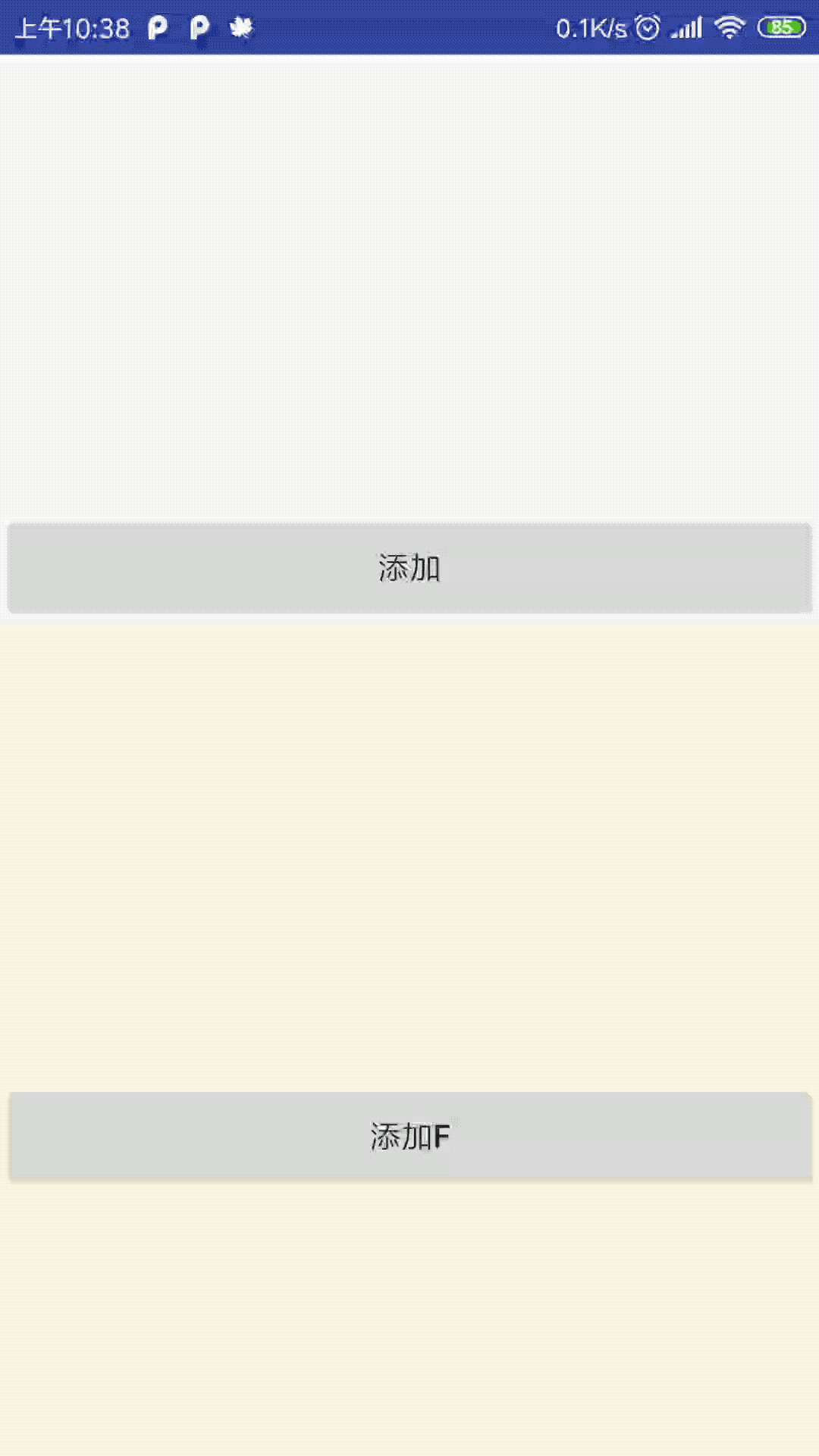JetPack 初见 - 使用 LiveData 实现组件之间数据共享
18年谷歌推出了新的开发套件 JetPack (喷气背包),本文将浅显的讨论一下其中 LiveData 的一些使用方法与注意事项。
1. LiveData 是什么?
LiveData 是一个可观察的数据持有者类。与常规observable不同,LiveData是生命周期感知的,这意味着它关注其他应用程序组件的生命周期,例如 Activity,Fragment 或 Service。这确保了 LiveData 仅更新处于活动生命周期状态的应用程序组件观察者。
这带来的优点是显而易见的
- 确保UI匹配数据状态
- 不存在内存泄漏
- 不会因为 Activity 停止而崩溃
- 不需要手动处理生命周期
- 适配配置更改(如设备旋转)
- 资源共享(如使用一个单例对象持有 LiveData 实现全局资源共享 )
2. 如何使用 LiveData
- 添加依赖 (根据实际需求添加)
1
2
3
4
5
6
7
8
9
10
11
12
13
14
15
16
17
18
19
20
21
22
23dependencies {
def lifecycle_version = "2.0.0"
// ViewModel and LiveData
implementation "androidx.lifecycle:lifecycle-extensions:$lifecycle_version"
// alternatively - just ViewModel
implementation "androidx.lifecycle:lifecycle-viewmodel:$lifecycle_version" // For Kotlin use lifecycle-viewmodel-ktx
// alternatively - just LiveData
implementation "androidx.lifecycle:lifecycle-livedata:$lifecycle_version"
// alternatively - Lifecycles only (no ViewModel or LiveData). Some UI
// AndroidX libraries use this lightweight import for Lifecycle
implementation "androidx.lifecycle:lifecycle-runtime:$lifecycle_version"
annotationProcessor "androidx.lifecycle:lifecycle-compiler:$lifecycle_version" // For Kotlin use kapt instead of annotationProcessor
// alternately - if using Java8, use the following instead of lifecycle-compiler
implementation "androidx.lifecycle:lifecycle-common-java8:$lifecycle_version"
// optional - ReactiveStreams support for LiveData
implementation "androidx.lifecycle:lifecycle-reactivestreams:$lifecycle_version" // For Kotlin use lifecycle-reactivestreams-ktx
// optional - Test helpers for LiveData
testImplementation "androidx.arch.core:core-testing:$lifecycle_version"
} - 创建一个 LiveData 实例用于保存特定类型数据,这通常在自己定义的 ViewModel 内内完成 。
- 创建一个 Observer 对象并重写
onChanged()方法,当 LiveData 对象中的数据发生变化时,会调用该方法,并传递包装在LiveData中的数据。该方法在主线程调用,通常用于变更 UI 状态。 - 将 LiveData 与 Observer 建立订阅关系。调用 LiveData 的
observe(LifecycleOwner owner, Observer observer)来建立订阅关系,该方法第一个参数为 LifecycleOwner ,第二个参数为上一步创建的 Observer 对象。
文至此处,各位读者朋友们应该已经从中窥出 LiveData 之所以能拥有生命周期感知能力,就是因为在最后一步中,我们传入了一个 LifecycleOwner 。
我们一层一层查看 AppCompatActivity 等组件都会发现,该类实现了 LifecycleOwner接口,所以我们的 LiveData 可以在每个组件中跟随生命周期变化而变化。便不会存在组件生命周期结束了,却错误的试图去更新UI,而导致崩溃这种情况(说的就是你 RxJava)。
3. 实操 - Activity 与 Fragment 之间的数据共享
创建一个持有LiveData的类,一般来说是 ViewModel,当然也可以是一个单例,本文使用单例模式。这将使得我们的 LiveData 的生命周期是整个 APP 的生命周期。
1
2
3
4
5
6
7
8
9
10
11
12
13
14
15
16
17
18
19
20data class Person(var name: String,
var age: Int,
var sex: Int)
object SingletonLiveData {
private val list = ArrayList<Person>()
val personList: MutableLiveData<ArrayList<Person>> by lazy {
MutableLiveData<ArrayList<Person>>()
}
fun addPerson(person: Person) {
list.add(person)
personList.value = list
}
fun clear() {
list.clear()
personList.value = list
}
}注意我们想要更新LiveData中的数据时有两种方式,一:在主线程中操作可以使用
setValue();二:在子线程中操作,使用postValue()。在组件中使用 LiveData 实现数据共享
在Activity中使用:1
2
3
4
5
6
7
8
9
10
11
12
13
14
15
16
17
18class DemoActivity : AppCompatActivity() {
override fun onCreate(savedInstanceState: Bundle?) {
super.onCreate(savedInstanceState)
setContentView(R.layout.activity_demo)
val observer = Observer<ArrayList<Person>>{
textView.text = it.last().toString()
}
SingletonLiveData.personList.observe(this,observer)
var age = 19
btnAdd.setOnClickListener {
SingletonLiveData.addPerson(Person("张三",++age,1))
}
supportFragmentManager.beginTransaction()
.add(R.id.fl_content,BlankFragment.newInstance())
.commit()
}
}在Fragment中使用:
1
2
3
4
5
6
7
8
9
10
11
12
13
14
15
16
17
18
19
20
21
22
23
24
25
26
27
28
29
30class BlankFragment : Fragment() {
lateinit var lastPersonTv:TextView
companion object {
fun newInstance() = BlankFragment()
}
override fun onCreateView(inflater: LayoutInflater, container: ViewGroup?,
savedInstanceState: Bundle?): View? {
return inflater.inflate(R.layout.blank_fragment, container, false)
}
override fun onViewCreated(view: View, savedInstanceState: Bundle?) {
super.onViewCreated(view, savedInstanceState)
lastPersonTv = view.findViewById(R.id.lastPerson)
var age = 19
view.findViewById<Button>(R.id.btnAddF).setOnClickListener {
SingletonLiveData.addPerson(Person("李四",++age,1))
}
}
override fun onCreate(savedInstanceState: Bundle?) {
super.onCreate(savedInstanceState)
val observer = Observer<ArrayList<Person>>{
lastPersonTv.text = it.size.toString()
}
SingletonLiveData.personList.observe(this,observer)
}
}实际效果预览:

图示中白色区域为Activity,浅黄色区域为一个 Fragment,我们在act 与 frag 互不持有的状况下实现了数据的共享,并且及时的将最新的数据状态反馈到 UI 上。
4. 扩展阅读 ViewModel 的作用范围
上文中持有 LiveData 的是我们创建的一个单例对象,他的作用范围是整个APP,任何一个组件在订阅该 LiveData 的时候,都将获得相同的数据。但是如果我们配合ViewModel来使用呢?
我们修改部分代码:
创建一个持有 LiveData 的 ViewModel
1 | class PersonViewModel : ViewModel() { |
修改 Activity:
1 | class DemoActivity : AppCompatActivity() { |
修改 Fragment:
1 | class BlankFragment : Fragment() { |
我们会发现数据不再共享了,这是为什么么?
原因其实很简单,这涉及到 ViewModel 的作用范围, LiveData 的作用范围取决于持有他的对象。如果是一个单例模式对象持有,那么这个 LiveData 全局共有,数据变化时,所有订阅他的组件都将调用 onChanged() 方法。
但是 ViewModel 不是单例模式,如果使用 ViewModel 持有 LiveData 是不是就不能在组件之间共享数据了呢?答案是可以!
我们观察 ViewModel 创建的方法ViewModelProviders.of(this).get(PersonViewModel::class.java)会发现,of 方法共有四个重载,它可以接受 Fragment 也可以接受 FragmentActivity。
其实我们只需要在 Fragment 中获取 ViewModel 时,传入 getActivity() 即可,这样Activity 与 其所属的 Fragment 就可以通过 ViewModel 持有的 LiveData 来实现数据共享。也就是说 ViewModel 通过 of() 方法的传入值,来决定了 ViewModel 的作用范围。
在多个Fragment嵌套时,使用 LiveData 有如下优势:
- Activity 不需要做任何事,甚至不知道这次交互,完美解耦。
- Fragment 只需要 与ViewModel交互,不需要知道对方 Fragment 的状态甚至是否存在,更不需要持有其引用。所有当对方 Fragment 销毁时,不影响本身任何工作。
- Fragment 生命周期互不影响,甚至 fragment 替换成其他的 也不影响这个系统的运作。